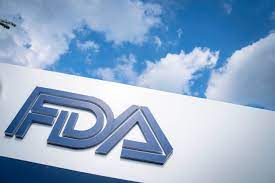The new article highlights the aspects related to the current version of the electronic submission template and outlines the key points to be considered by submitters (applicants).

Table of content
The Food and Drug Administration (FDA or the Agency) has published a guidance document dedicated to electronic submission template for medical device 510(k) submissions.
The document provides an overview of the applicable regulatory requirements, as well as additional clarifications and recommendations to be taken into consideration by medical device manufacturers and other parties involved to ensure compliance thereto.
At the same time, provisions of the guidance are non-binding in their legal nature, nor are they intended to introduce new rules or impose new obligations.
Moreover, the authority explicitly states that an alternative approach could be applied, provided such an approach is in line with the existing legal framework and has been agreed with the authority in advance.
Electronic Submission Template Structure, Format, and Usage
The eSTAR is the special platform for the preparation of 510(k) electronic submissions. It assists users in creating a comprehensive 510(k) submission by providing a series of questions, texts, logical sequences, and prompts.
eSTAR is technologically advanced, incorporating databases such as FDA product codes and FDA-recognized voluntary consensus standards.
It also presents precise questions aimed at gathering specific data from the submitter. The template also provides links to important regulations, guidance, and other useful resources.
The authority also mentions that eSTAR is designed in alignment with the “SMART” 510(k) review memo template, a tool used by CDRH reviewers.
As further explained by the FDA, the eSTAR submissions, given their comprehensiveness, are expected to bypass the refuse to accept (RTA) process.
The CDRH Portal automatically confirms the completeness of eSTAR.
To ensure the integrity of the submissions, the FDA will conduct a virus scan and a technical screening on the eSTAR.
This screening verifies the accuracy of the eSTAR responses and ensures that relevant attachments accompany each submission.
If the eSTAR doesn’t meet the technical screening standards, the submitter will be notified, and the submission will be put on hold until a satisfactory eSTAR is provided.
The authority additionally emphasizes that if a satisfactory replacement is not provided within 180 days from the notification date, the FDA will consider the respective 510(k) withdrawn.

Key Components of the 510(k) Electronic Submission Template
A table included in the present guidance provides an overview of the eSTAR 510(k) Electronic Submission Template. According to the said table, the key components cover, inter alia, the following matters:
- Submission Type: This section identifies crucial data for the FDA initial processing and review.
- Cover Letter/Letters of Reference: Here, submitters attach a cover letter and any documents referring to other submissions.
- Applicant Information: This section requires information about the applicant and any correspondent.
- Pre-Submission Correspondence & Previous Regulator Interaction: Details about prior submissions for the same device are to be included here.
- Consensus Standards: This section identifies any voluntary consensus standards used, both FDA-recognized and non-recognized.
- Device Description: This section requires detailed information about the device, including its technological features, materials, design, energy source, and other specific features.
- Proposed Indications for Use: This is where the submitter identifies the proposed indications for the device’s usage.
- Classification: This section requires the identification of the classification regulation number for the device.
- Predicates and Substantial Equivalence: Submitters need to identify a predicate device (similar device already placed on the market) and provide a comparison between the subject and predicate devices.
- Design/Special Controls, Risks to Health, and Mitigation Measures: This section is only applicable to Special 510(k) submissions.
- Labelling: Submitters provide proposed labelling details here.
- Reprocessing: This section is for assessing reprocessing validation and labelling.
- Sterility: Information about sterility and validation methods is provided here.
- Shelf Life: This section is about ensuring the device maintains its performance throughout its proposed shelf life.
- Biocompatibility: Information on the biocompatibility assessment of patient-contacting materials is required here.
- Software/Firmware: Submitters provide any relevant software documentation here.
- Cybersecurity/Interoperability:This section is about assessing cybersecurity-related matters associated with the device in question.
- Electromagnetic Compatibility (EMC), Electrical, Mechanical, Wireless, and Thermal Safety: Information on the device’s safety testing is to be provided here.
- Performance Testing: For non-in vitro diagnostic devices, information on non-clinical and clinical test reports is provided.
For in vitro diagnostic devices, analytical performance and other relevant studies are included. - References: Any literature references used are included here.
- Administrative Documentation: This section includes various administrative forms related to the submission.
- Amendment/Additional Information (AI) response: This is where responses to Additional Information requests are included.
Conclusion
In summary, the eSTAR electronic submission template facilitates the process of preparing comprehensive 510(k) electronic submissions by offering an organized structure and relevant databases.
The FDA ensures the integrity of these submissions through various screening processes.
The 510(k) Electronic Submission Template is designed to provide all necessary information for the FDA to review, ensuring the safety and efficacy of medical devices.
How Can RegDesk Help?
RegDesk is an AI-powered Regulatory Information Management System (RIMS) designed to simplify global compliance for medical device companies. With regulatory intelligence covering 120+ markets, RegDesk helps you prepare and publish global submissions, manage standards, conduct impact assessments, and stay ahead of regulatory changes all from a single, centralized platform. Expanding into new markets has never been easier.

